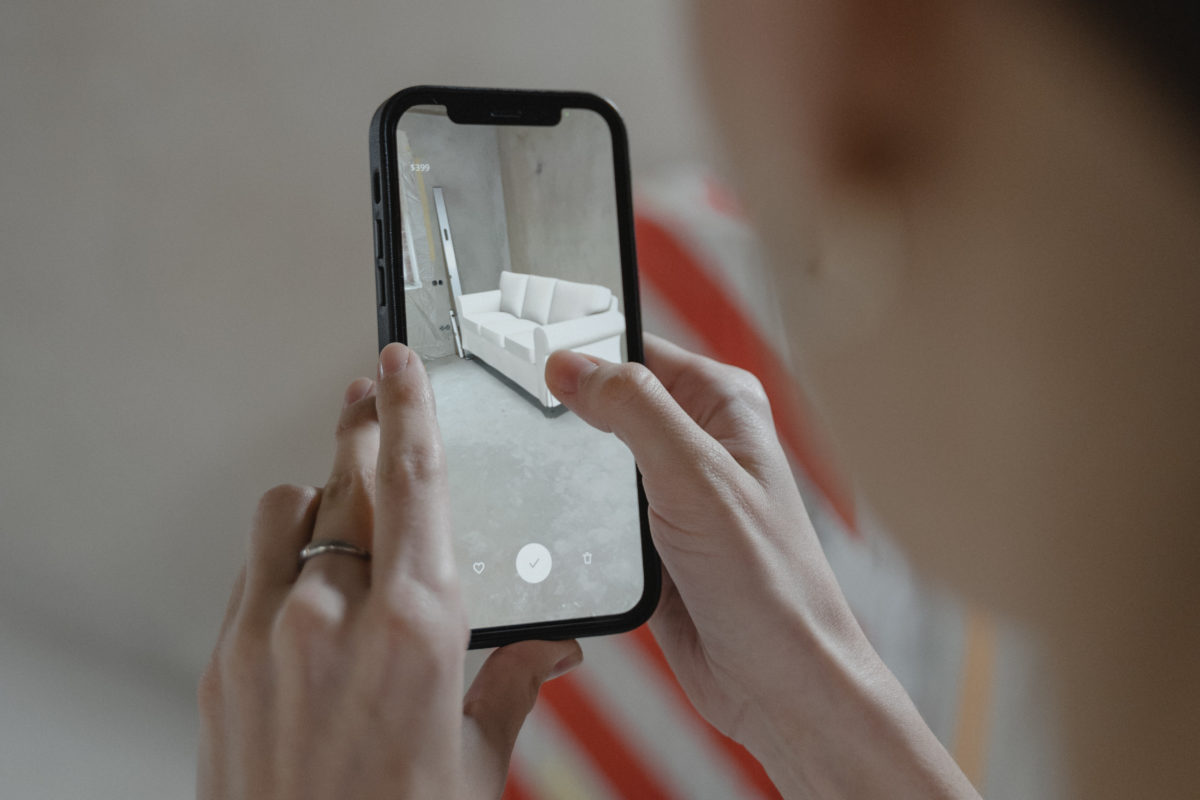Augmented reality looks to be the next frontier of e-commerce, but are you ready for it?
AR shopping capitalizes on an enhanced version of the physical world around you that involves digital visual elements, sound and other sensory stimuli. These features offer customers deeper and more thorough information about your products.
Learn more about AR shopping and three reasons why you should consider it for your business.
Interestingly enough, about 73 percent of mobile AR users reported either high or very high satisfaction with mobile AR experiences, while about 51 percent of consumers feel that retailers are failing to take full advantage of augmented reality.
The opportunity to jump on this emerging technology (if it’s right for your business) is now. The following are five tips to help you get started with offering AR shopping.
Identify your business objectives
Before diving into AR shopping, it’s critical to decide what your goals are. How would AR shopping specifically serve your customers?
Think through your customer’s purchasing journey with your business and where the pinch points may lie that you could address with AR solutions.
Deciding on your objectives and what you want to create first will make your decisions about techniques and specific tools to use far easier and more efficient.
Determine your budget
Augmented reality includes diverse opportunities for your business. So, once you know what you want to accomplish, it’s time to decide how much your business can spend to launch and maintain such a platform.
Fortunately, even if you don’t have much of a budget to work with, you can get your feet wet by experimenting with Snapchat filters or customized Instagram stickers and “try on” items for Stories.
Choose your AR shopping tool
A number of tools exist that can help you achieve your vision of an AR shopping experience for your customers.
However, as you begin to examine the options, keep the following factors in mind:
- Available features: Clearly, the available features of any given tool will serve as a large factor in your decision-making process. Keep in mind what you need and what you don’t need. However, especially if you’re new to AR, you may discover a feature you’re not previously aware of that can elevate your original plan. Stay open to that possibility.
- Cost: Depending on the license type, a tool could be free or range in pricing. While free is great, make sure to review what features are available in free versions and whether a paid version could serve your objectives better.
- Supported devices and operating systems: Check whether a tool is compatible with relevant devices and operating systems for your customers. For example, if you’re developing an app for multiple phone types, confirm that the tool you choose supports at least the main mobile operating systems.
- Learning curve: Ideally, you want to find an AR shopping tool that is easy for you to understand, use and update as needed. If you have questions, reach out to the developer. You’ll often be offered a free demo so that you can see first-hand whether this is the right tool for you.
Track the pros and cons of all available AR shopping tools that you review so that you can make the best and most-informed decision for your business.
Market your new AR shopping platform
Considering that the demand for AR shopping is there, you’ll want to develop a full campaign leading up to the launch of your AR shopping platform.
Ideally, you’ll plan content across social media platforms, your website and any other channels you have access to.
Not sure where to begin? See our seven tips before planning your first marketing campaign.
Request and collect feedback
After launching, you’ll want to use surveys to follow up with your AR shopping customers. Doing so will help you find out what they thought about the experience.
Be sure to ask specific questions while also offering open-ended opportunities for respondents to share more. Never assume that you’ll think of everything you could possibly ask about.
By understanding the user experience, you’ll be able to improve your offering to serve your customers even better.
As you begin to launch AR shopping for your business, consider optimizing your digital marketing process. This includes such features as automation, audience segmentation and enhanced email marketing capabilities, to name a few. DailyStory can help. Schedule your free demo with us today.

